The enduring fight for the Hagia Sophia
Transforming the 1,500-year-old cathedral into a museum in the Thirties solved centuries of religious tension. Erdogan’s plan to reopen it for Muslim prayer shows the fight to preserve the Hagia Sophia is about far more than just a building, writes Kevin Childs

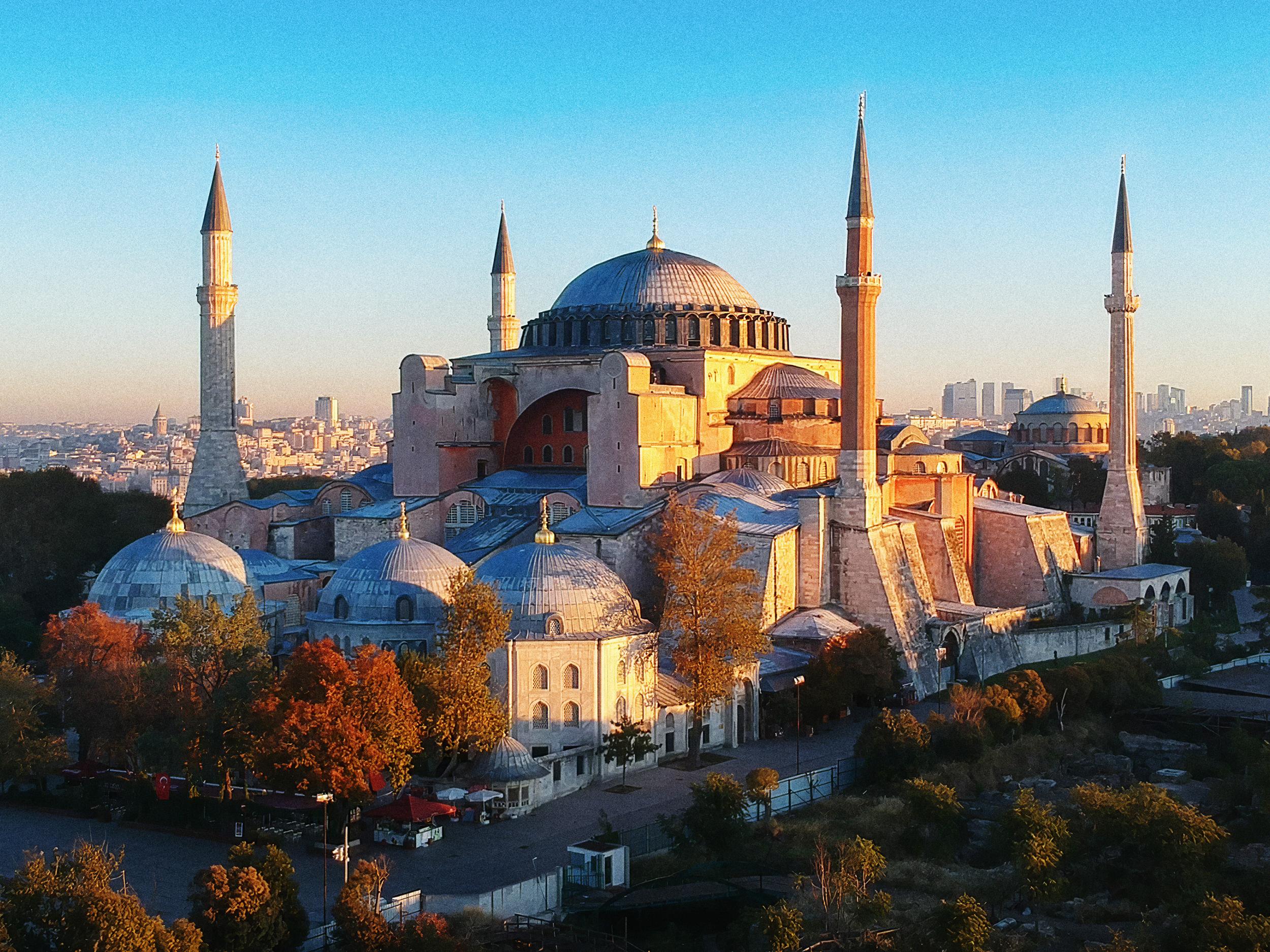
Approaching Istanbul by boat from one of the ferry docking stations on the Asian side of the Bosporus or the Sea of Marmara, the scene before you is dominated by the vast but elegant pile of buttresses, apses and great dome of Hagia Sophia. It’s a sight that will have thrilled travellers for many centuries. To step inside is to enter the “artifice of eternity”, as Yeats put it in his poem “Sailing to Byzantium”; one of those rare accomplishments of human endeavour that matches the natural world. After almost a century of being a secular museum, on 10 July the Turkish Council of State, Turkey’s top court, ruled that the museum of Hagia Sophia can be redesignated as a mosque.
Turning Hagia Sophia back into a mosque is a project that has been close to the heart of Turkey’s president Recep Tayyip Erdogan. In May of this year, he ostentatiously attended prayers in the ancient building to commemorate the conquest of the old Byzantine capital of Constantinople by the Ottoman sultan Mehmed II in 1453. The conquest led to the conversion of what was then the most important church of Orthodox Christianity, the Church of the Holy Wisdom, as Hagia Sophia means, into the principal mosque of the Ottoman empire.
The conquest of Constantinople was explicitly mentioned in the decision of the Council of State. Using baffling reasoning, the court held that Constantinople’s conquest enshrined Mehmed’s “right” of ownership over Hagia Sophia and this was proof that it should be and always was a mosque. According to this schoolboy logic, any subsequent decisions by subsequent governments cannot, it seems, overturn this apparent “truth” which flowed from Constantinople’s fall and the demise of the Byzantine empire.
As a result of the court’s decision and the president’s subsequent decree, the building will now be administered by the Directorate of Religious Affairs, which has been supercharged recently to oversee the promotion of Islam in Turkey’s education and public life. What this means for the Swiss company that bid nearly $4bn to run the museum for nine years is anybody’s guess.
Hagia Sophia has survived fire, riots, earthquakes, bombardment and looting by both Christian and Muslim armies in its long life. Its interior decoration has been hacked away by iconoclastic Byzantine emperors and plastered over by zealous imams and 19th-century restorers, but enough has survived to give some impression of just how sumptuous it once looked to visitors from east and west.
It’s a chequered history. But one thing this nearly 1,500-year-old building inspires is passion: passion for its religious and symbolic meaning, passion for its architecture, passion for its sheer antiquity, passion for its numinousness.
Perched on a bluff overlooking the confluence of the Sea of Marmara and the Bosporus, Hagia Sophia was consecrated as the Great Church of Constantinople by the eastern Roman emperor Justinian I in 537, nearly six years after construction began. Its broad dome once sparkled with gold leaf in the hard, southern sun. Great bells tolled out over the blue waves, and later, the call to prayer echoed from the four tall minarets constructed on the orders of successive Ottoman sultans.
From the beginning it was considered miraculous, its design attributed to angels rather than its architects, the very human Isidore of Miletus and Anthemius of Tralles. It was and still is a masterpiece of mathematical design and engineering unsurpassed for a thousand years. Its great dome, over 55 metres from the pavement, appeared to Justinian’s contemporaries to be “suspended from heaven by a golden chain”. The walls were clad in multi-coloured marble revetments, sliced in thin layers to create syncopated repeat patterns over the surface of the interior walls.
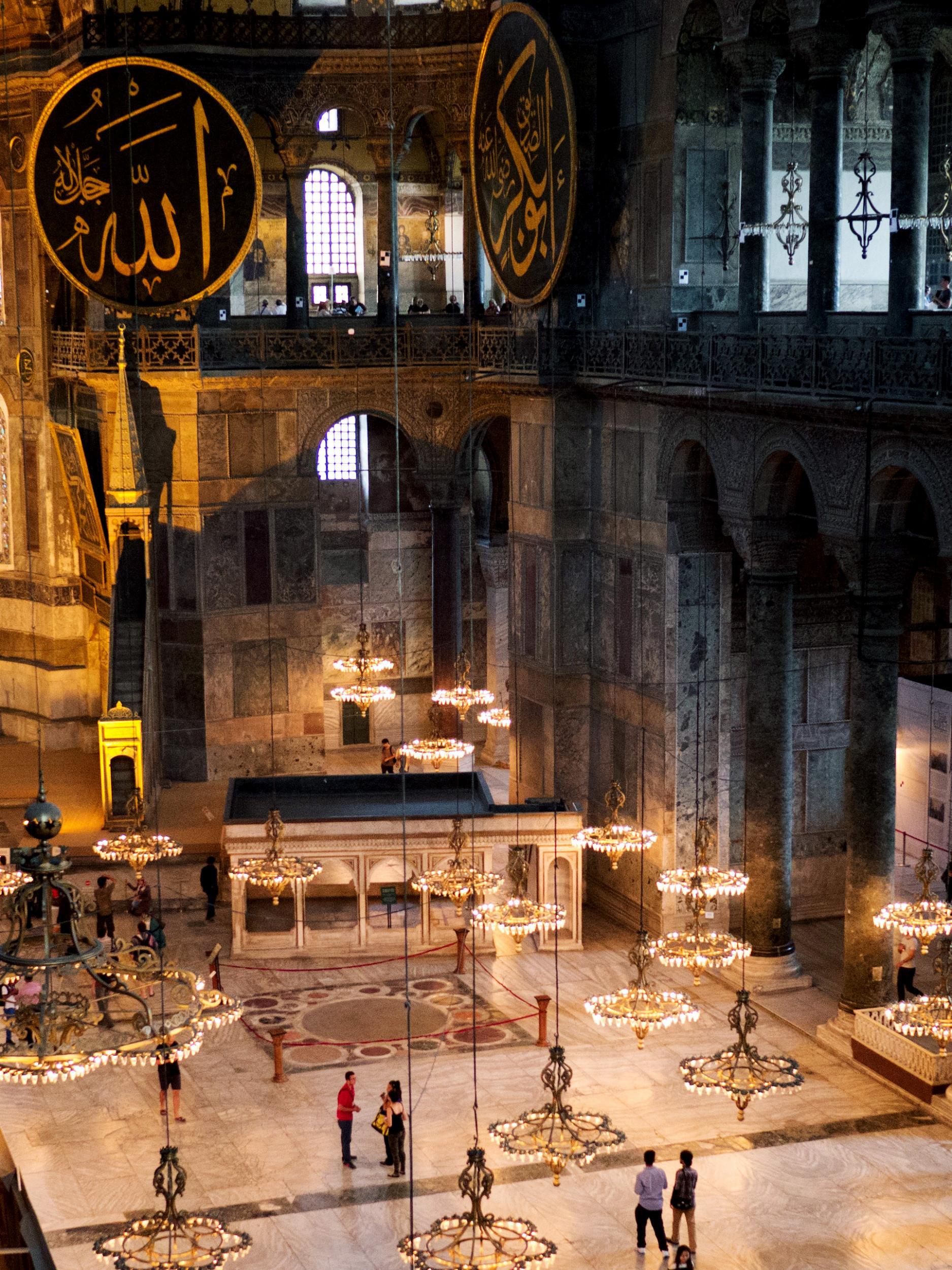
“…the fresh green from Carystus, and many-coloured marbles from the Phrygian range, in which a rosy blush mingles with white or shine bright with flowers of deep red and silver.” So wrote the court poet Paul the Silentiary in 563 when the building was reconsecrated after earthquake damage led the dome to be strengthened and raised.
Ambassadors from the prince of Kiev famously wrote to their master in 987 after experiencing the full splendour of Byzantine ritual in Hagia Sophia: “We no longer knew whether we were in heaven or on earth, nor such beauty, and we know not how to tell of it.”
Entering the building for the first time, via the vestibule or Narthex on the western side of the structure and through the huge, bronze imperial doors, as old as Hagia Sophia itself, the impression is dizzying, literally breathtaking. How can this structure, its vast central dome pierced by 40 windows, seeming to float over gleaming semi-domes and airy marble arcades, stand up? How has it withstood the ages? How was such a structure built 1,500 years ago? Procopius, the official historian of Justinian’s reign, wrote on its completion: “[It] is distinguished by indescribable beauty, where size and harmony of its measure conjoin, nothing too much or too little; more magnificent than ordinary buildings, and far more elegant than those which do not share its just proportions.”
It’s a description which recognises the peculiar uniqueness of Hagia Sophia, an almost perfect representation of the principles of mathematical design wedded to harmony of artistic vision in three-dimensional space, which is what gives it its breathtaking quality.
Pundits will say that Erdogan is flexing his muscles against the west – most of the western powers have condemned the move, although there’s precious little they can do about it
In 1935, as part of his move to bring the newly created Republic of Turkey into line with his modernising, secular nationalist project, that republic’s first president Mustafa Kemal Atatürk caused the old conflict-ridden hot potato of a mosque/church to become a museum, at a stroke eliminating any religious controversy over who could or couldn’t pray there. No one could. Instead, it would become a symbol of the ancient lineage of the patrimony of the Turkish people, a symbol of the new Turkey with its roots deep in the past, if you like. The museum would be the crowning glory of the recently renamed Istanbul, the Turkish vernacular name for old Constantinople. Turkishness reclaimed the relics of the past and would nudge Turkey into the future.
As a secular building, the restoration and unveiling of its surviving mosaics was possible. Prior to this, they had been plastered over and many, such as the great image of Christ Pantocrator which once greeted visitors from the centre of the vast dome, had been destroyed. What had survived is still very fine indeed and can be seen from the wide gallery, an upper floor which runs on three sides of the central nave.
Islam’s impact on the building remained just as celebrated. The large discs inscribed with the names of God, Mohammed and the first four caliphs in Arabic were retained as part of the building’s history, along with the gilded mihrab indicating the direction of prayer for the Muslim faithful.
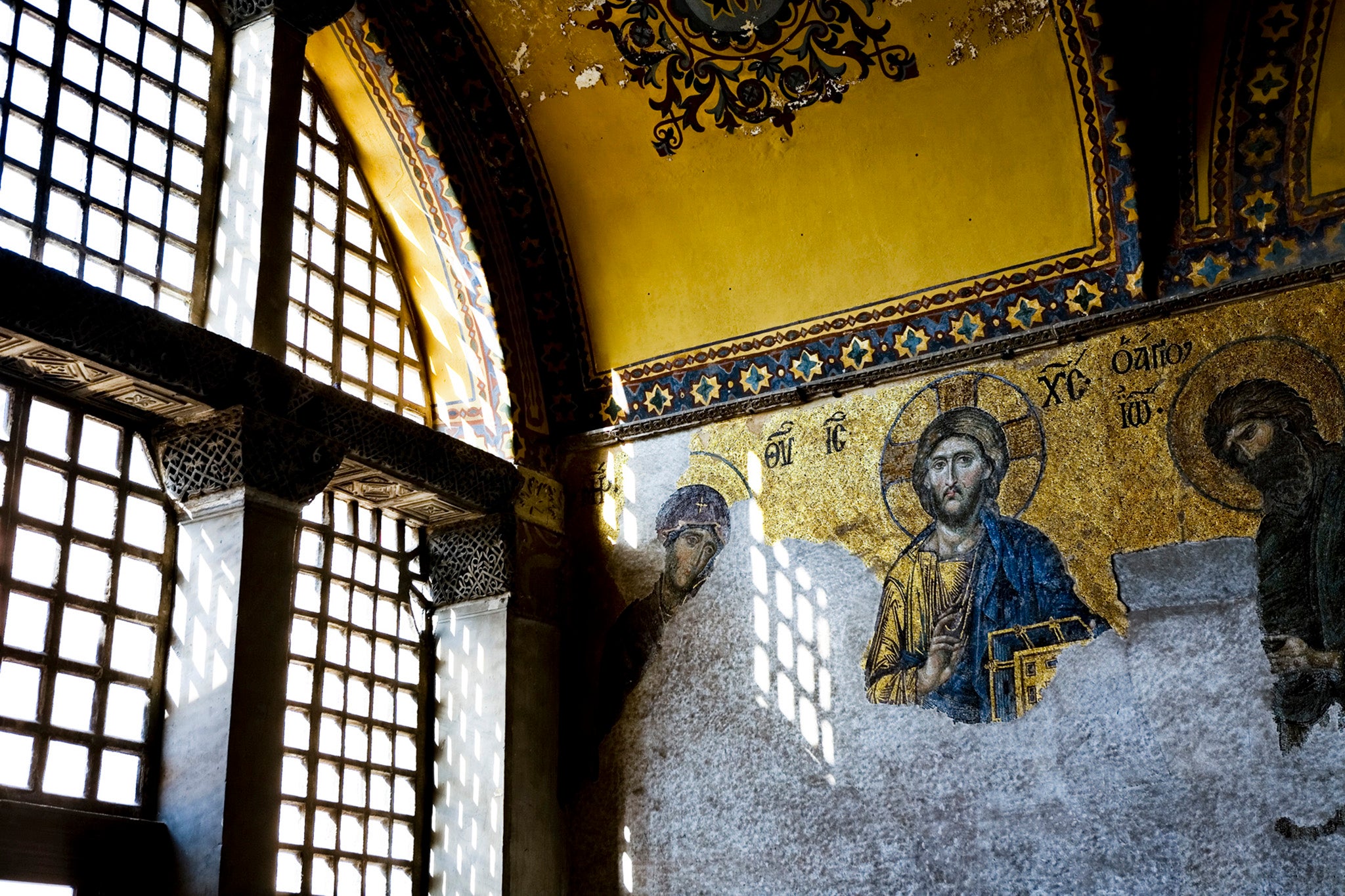
For 85 years the history and magnificence of Hagia Sophia, throughout every age and every culture that shaped it, was treasured, as a museum.
Why then has Atatürk’s project to promote a secular, nationalist Turkey been subverted by his successor Erdogan?
Pundits will say that Erdogan is flexing his muscles against the west – most of the western powers have condemned the move, although there’s precious little they can do about it and very little political will to challenge Turkey’s strongman. Unesco, which granted Hagia Sophia the status of world heritage site in 1985, will look into the implications of this change of use, expressing its regret at the lack of consultation on the part of the Turkish government. The status was premised on the building remaining a museum, the heritage of all periods of its history, as a church and a mosque and a secular site, to be maintained.
But there’s more to this public piety than just posturing. Critics of Erdogan say he behaves like a sultan, and no doubt he places himself in the long and supposedly seamless tradition of Ottoman rulers, disrupted by Atatürk and his secularist successors. It’s a tradition which stretches back further than the conquest, though. Mehmed and all the sultans before him saw themselves as ruling over a continuation of the Roman empire – just as the Byzantine emperors did. The old Turkish sultanate in Anatolia was called Rum, after the Arabic name for Rome. To justify his conquest and the destruction of what was left of the “Greek” empire, Sultan Mehmed even cited revenge for the burning of Troy, a city which stood at the far end of the Sea of Marmara from Istanbul on the Asian side, refugees from which were mythologised as having founded the Roman people themselves.
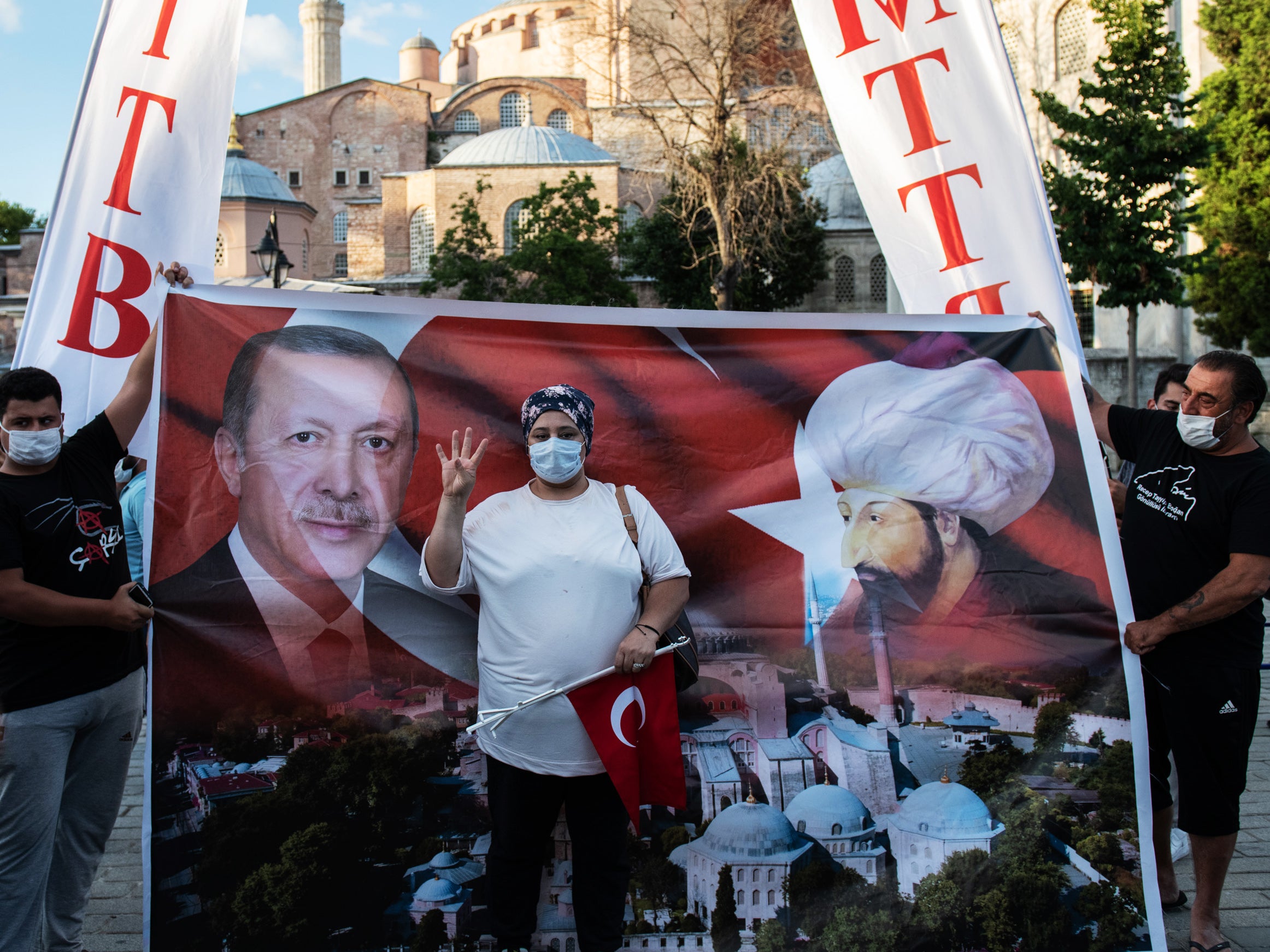
There was no clamour from within Turkey for Hagia Sophia’s status as museum to be removed. True, from time to time, a small group of Muslim worshippers would stand outside the site protesting its continuation as a museum and demanding access to it for prayers. “Of course, it’s a mosque,” says their leader. “It looks like a mosque.” To reinforce his argument, he points to the Sultan Ahmed, or Blue Mosque, on the other side of a broad rose garden, the elegant, flattened dome of which, perched on a series of semi-domes does indeed reflect the building opposite it. In fact, all the great mosques in Istanbul bear a resemblance to Hagia Sophia, but that’s because the architects who designed them, the most famous of which was the 16th-century Mimar Sinan, were consciously modelling their work on the older building. But you won’t see this design anywhere else in the Islamic world.
The comment reflects another seeming conundrum which is that according to Islamic fundamentalists, the notion that Islam is the only true religion means that all religions are essentially earlier versions of it and that, consequently, all religious buildings from the Temple of Jerusalem to Hagia Sophia were and are mosques. It’s hard to argue with such “clarity”, and no amount of theological debate or historical exegesis will persuade these people otherwise.
The result is a jewel box of exquisite colour and light-catching glitter from thousands upon thousands of glassy tesserae as the story of Christianity unfolds over walls and vaults
Istanbul has been here before, and very recently. Last November, in what now seems like a trial run for Hagia Sophia, the same court decreed that another museum, the Chora Museum that was a mosque that had been a church, should revert to what was described as its “original function”, citing again Ottoman-era law which decreed it a place of Muslim worship. On both occasions, therefore, the Council of State has effectively confirmed the supremacy of Ottoman decrees over the laws of the Turkish Republic, an odd development and one which could prove very worrying indeed for secularists warning against of the possible return of Sharia law to Turkey.
The Chora Museum is tucked away in a fairly remote corner of northern Istanbul. From the mid-fifth century and over many rebuilding campaigns in the 11th and 14th centuries, its original function was that of a monastic church and imperial chapel, extensively decorated with mosaics and frescoes.
Mirroring the history of Hagia Sophia itself, Chora was converted into a mosque by 1511 and then deconsecrated in 1945, becoming a museum. Not long after this, in the 1950s a programme of restoration uncovered its extensive paintings and mosaics, dating mostly from a 14th-century restoration of the church. These had been hidden beneath plaster and screens during the 450 years or so it functioned as a mosque. The result is a jewel box of exquisite colour and light-catching glitter from thousands upon thousands of glassy tesserae as the story of Christianity unfolds over walls and vaults.
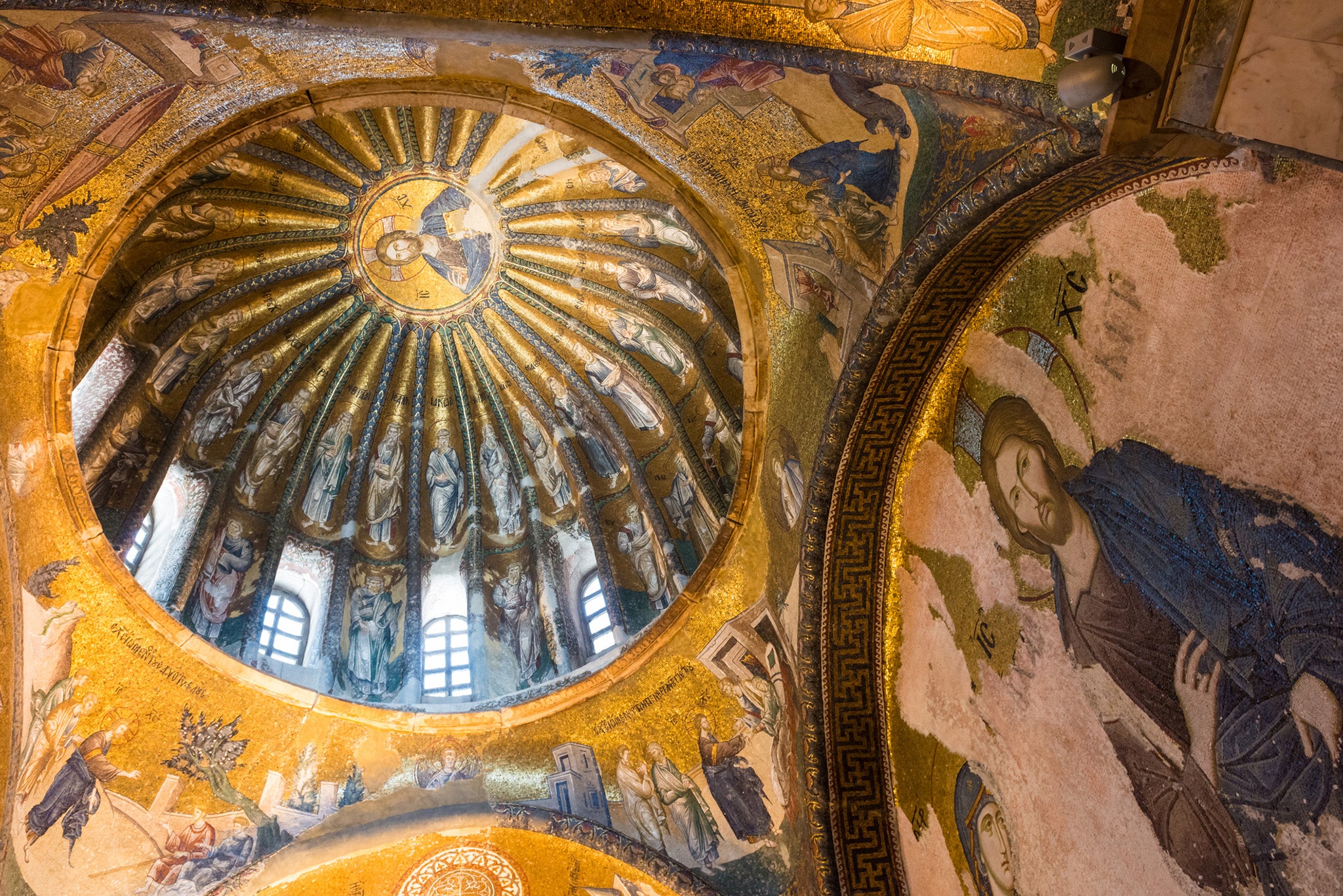
With some of the best-preserved frescoes and mosaics from the late Byzantine period, the Chora Church is a testament to the love and devotion of its second founder, Theodore Metochites, civil servant, poet and philosopher who lavished much of his fortune on the church and monastery, retiring there as a monk after his fall from power in the 1320s. He captured something of its vivid beauty in the poetry he wrote in retirement: “Serenity pours all about me when I go into this your church, My heart is straight way bright and airy, And my soul is captured by ineffable, unequivocal joy, As I look about me; my griefs dissolve, At the sight of so much grace and beauty.”
The artists who made these paintings and mosaics have often been equated with the beginnings of the western Renaissance in Italy at the same time. There is a pronounced shift from the stiff, iconic hierarchy of earlier Byzantine art towards expressiveness, volume and dynamic movement which makes the decoration of Chora doubly important as a moment in creative time when the past was rapidly becoming the future.
Turkey was once a brilliant solution to a predominantly Muslim country which wanted to play a significant role on a secular world stage
How has this change of status affected the Chora Museum, now once again the Kariye Mosque? As one Turkish art historian told me, “having more mosaics than any other place, it’s very difficult to know how” it will work as a mosque. As they pointed out, other recent examples of churches-turned-museums-turned-mosques in Iznik and Trabzon in Anatolia are not encouraging, with ancient frescoes deteriorating behind screens and building fabric crumbling. It’s too early to tell, and the Covid-19 pandemic has created something of a hiatus in the process of transformation, but it was only last week that the Chora Museum website has become unavailable (as part of Hagia Sophia’s museum site this may be linked), and there appears to be a silence hanging over any real news of the old museum’s fate.
Eight months later, and the same decree has altered the future of Hagia Sophia. Prayers will be said from today, we’re told, and the old Great Church will cease to be a museum, although it will remain open to “locals and foreigners, Muslims and non-Muslims”, according to the president.
So what, you might think.
Condemnation of the move has, not surprisingly, come from Christian leaders, notably the Orthodox Churches. “A threat against Hagia Sophia is a threat to … our spirituality and history,” intones the head of the Russian Orthodox Church, Patriarch Kirill. The Ecumenical Patriarch of Constantinople warned of a fracturing between east and west and the Pope expressed his “pain” at the Turkish government’s decision. All music to the ears of Turkey’s Islamic fundamentalist nationalists, no doubt, who hoped for just such a provocation. After all, for nearly 600 years western religious leaders and rulers, from Holy Roman emperors to Russian tsars, have dreamed of repossessing Hagia Sophia as the mother church of Christendom, sitting dewy-eyed as they imagined they could hear bells ringing out across the Sea of Marmara once again. For them, its conversion into a mosque was akin to how many Jews have felt about the construction of the Al-Aqsa Mosque on the Temple Mount in Jerusalem.
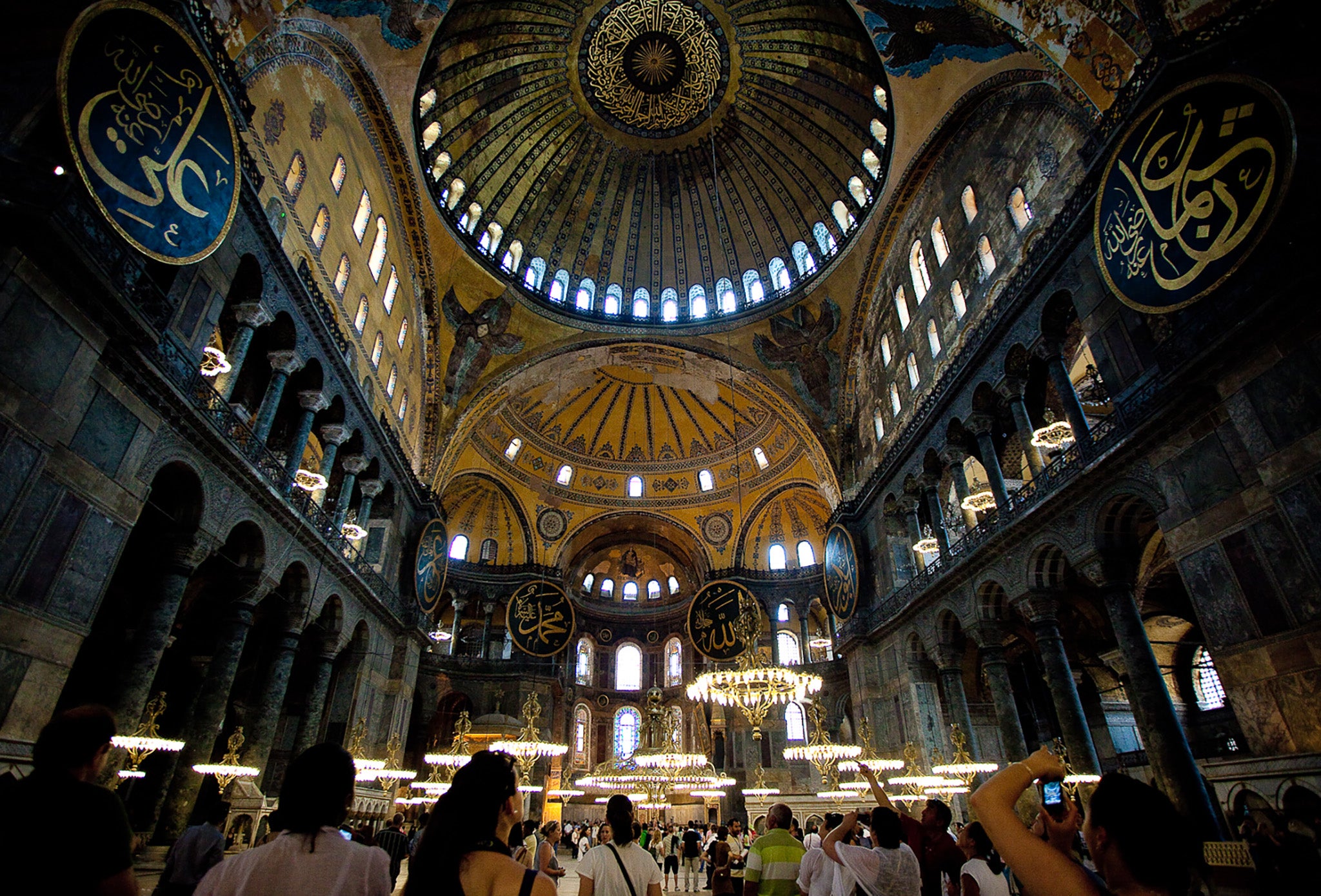
From tiny steps with the Chora’s loss of museum status to larger strides with Hagia Sophia’s redesignation, is it entirely fanciful to see these developments as staging-posts towards a pan-Islamic movement? Erdogan has even acknowledged something similar: “The revival of Hagia Sophia is the harbinger of freedom of Al-Aqsa and the footsteps of Muslims emerging from the era of interregnum.”
There should be a warning on any such yearnings. It is the stuff of which conflicts are made. And President Erdogan knows that.
But it isn’t just foreigners who lament Erdogan’s decision. The Peoples’ Democratic Party, one of the president’s main political rivals, denounced the move, and Turkey’s most famous writer, Orhan Pamuk, said: “There are millions of secular Turks like me who are crying against this but their voices are not heard.” Art historians and archaeologists in Turkey need to be careful – they’re mostly government employees and there have already been purges in academia – but no one I spoke to welcomed the move.
Atatürk’s neat solution to the religious tensions that have percolated around Hagia Sophia for centuries recognised something significant in its nature. Something which goes beyond religious beliefs or a supposed sense of spirituality it’s imagined clings to certain structures; something all the imams and muftis and patriarchs don’t or won’t see. Hagia Sophia, like the Chora Church or the grand Suleymaniye Mosque in Istanbul for that matter, is a testament to human ingenuity, the ability to imagine and plan down to the minutest detail, the ultimate expression of science and art. Call it inspired by God, if you will. I prefer to see it as a product of human harmony.
And that is why it’s neither exclusively a church nor a mosque, and why the word museum, a place dedicated to the muses, those ancient personifications of the arts and sciences, is perhaps the perfect identity and moniker for it. Entering any great religious building, whether Canterbury Cathedral, St Peter’s in Rome or the Great Mosque of Damascus, your imagination is restricted by religious scruples: what you wear, how you behave, certainly, but also a strange sense that, unless you’re an adherent, one of the faithful, you’re only tolerated in and by the space. Without such considerations, museums like Hagia Sophia liberate the mind and allow thought to range freely.
President Erdogan’s attack on the secular settlement of Turkey has gained momentum. No doubt, he despises the position Atatürk has held in the Turkish political consciousness since the founding of the republic in 1923. Turkey was once a brilliant solution to a predominantly Muslim country which wanted to play a significant role on a secular world stage. Erdogan would make it just one more of the Islamic states lying to the east of the Bosporus.
Hagia Sophia has become a casualty of that hatred, but there is light in all this. The peculiar reasoning of the Council of State opens the way to a challenge in international law. The unfortunate precedent of placing a premium on old autocratic, religious-based laws over Turkey’s modern, republican legal system, and the bizarre reliance on the rights of conquest, effectively legitimising what in international law would now be seen as a crime of aggression, may offer a starting point for anyone in Turkey or beyond who wants to challenge these decisions.
As the afternoon light, bright and shining with the reflection of water all around the peninsula on which Istanbul stands, slants through the ring of high windows underneath the dome, tiny motes of dust playing within it pricked by the heat, the cool temperature of the vast, marble-clad space below, is a contrast to the broiling summer city outside. Hagia Sophia remains serene, the wisdom of ages keeping itself to itself, unmoved by human passions and controversy. It has endured for 1,500 years and no doubt will do so for a good few more. Now and then it needs a helping hand – repairs to the ancient fabric, the shoring up of its massive walls and piers which shoulder the weight of the dome, the strengthening of its foundations in the soft soil beneath it – and a little protection from human passions and prejudices.
Join our commenting forum
Join thought-provoking conversations, follow other Independent readers and see their replies
Comments